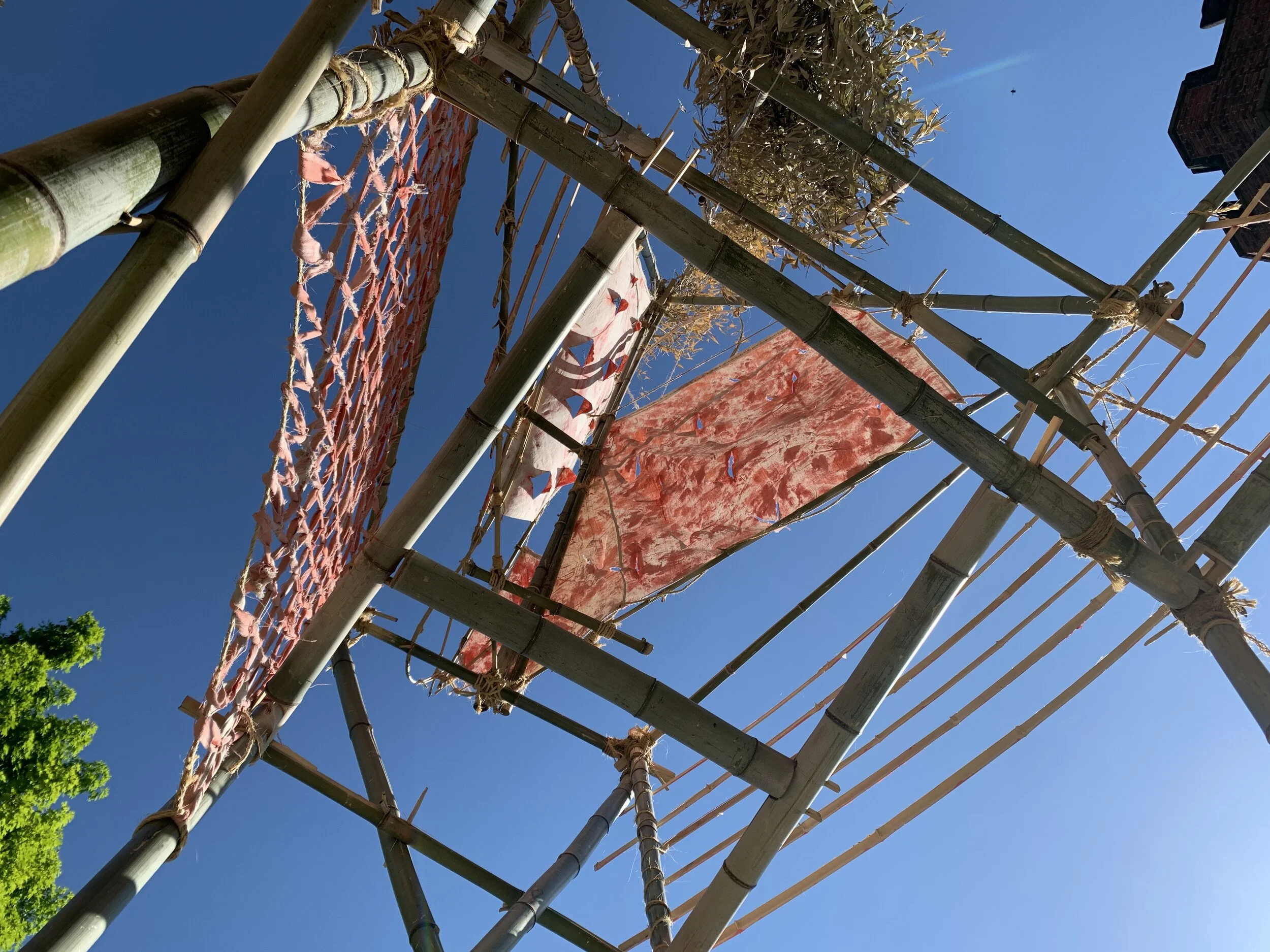
Ody The Outsider
Winner of the Branch Museum of Architecture and Design’s 2020 Design Build Competition
When I was asked in early 2019 if I was interested in building a large Trojan horse for the annual BMAD Design Build, I knew that this was once in a lifetime.
I started work on sketching the structure and working on the model in October of 2019. The first concepts involved stacked cubes of lashed bamboo, but structurally it was not working as I made the model. I made the switch to working with more triangular forms with some curves to suggest the shape of the rib cage.
After making a 1/12 scale model and part of a 1/6 scale model to work out some structural kinks, I was as ready as I’d ever be to start on the final horse.
The building of Ody began in March. I built the leg segments first. The cross bars that form the torso were added next before flipping the horse onto its feet. Next I added the bars to the bottom for stability. The head was then built on the ground before being hoisted into place.
The raising of the head turned out to be one of the more tricky moments on the project. I had initially envisioned attaching the front of the neck to the front of the torso with the head hanging upside down. This would act as a hinge point and the head would just be tilted into place using ropes. This did not work. The point was just not structurally sound enough.
My wife, Hilary came up with the idea to lift the back of the neck on first. Then we slid the head on, pulling it with ropes, while a couple of the Horse Helpers pushed up on the front from ladders. This worked well.
Unfortunately we did have to do that whole process a second time. In early May a storm rolled in and toppled Ody. Luckily there was minimal damage to Ody and no damage to the museum or the grounds.
Once Ody got back up and his head was reattached, we added new ballast elements to weigh the horse down. These were made using cement blocks stacked on wood sleds. These were tied to Ody with ropes equipped with a pulley system. This allowed the rope to be untied and tightened as the ropes stretched over the life of Ody.
The other change that happened after the fall was the approach to Ody’s skin. Initially this was going to be large segments of canvas that would not entirely cover the body. This would allow light to pass through and for the inner structure to be seen. However as we saw in the storm, the canvas became a sail.
The new approach used hand made cargo netting (made from the same painted canvas), painted bamboo slats, and woven bamboo. This would create a suggested skin that would also allow strong winds to pass thru with minimal effect on Ody and his surroundings.
One of the last additions was the replacement of the caution tape with hand made flags. The caution tape just did not have a cohesive look.
Ody will be on display until the start of 2021. Go check him out in the Branch Museum courtyard.


















